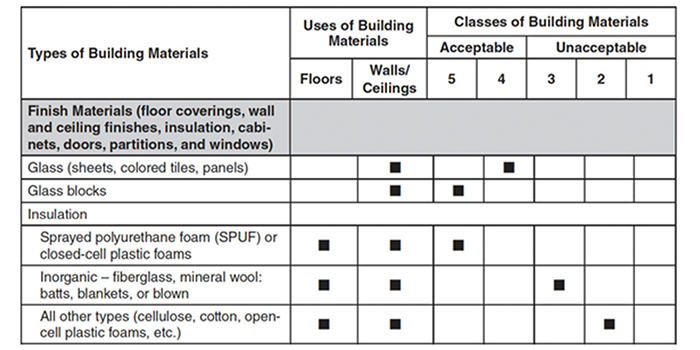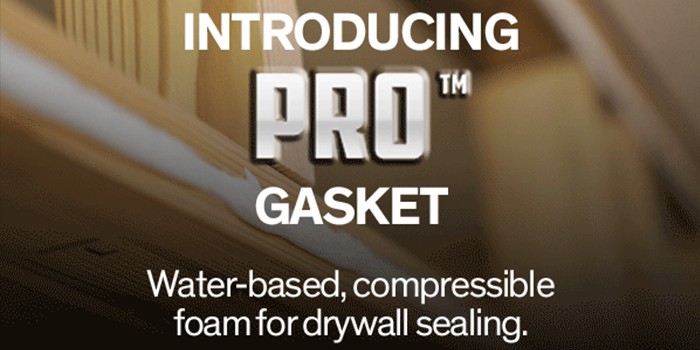Fortified Foundations


SPRAY FOAM MAGAZINE – Each year, from June 1st to November 30th, residents living along the east coast of the United States, the Gulf of Mexico, and the Caribbean Islands closely monitor hurricane activity in the Atlantic Ocean. This six-month window, known officially as Hurricane Season, represents the annual period when conditions are most likely to form a potentially catastrophic storm event.
Hurricanes damage buildings in three ways: wind, storm surge, and wind driven rain/debris. As history has shown, hurricanes can cause millions of dollars in damage and impact affected areas for decades. In 2005, Hurricane Katrina caused the most destruction on record, causing an estimated $193 billion in damages. After each major hurricane passes, there are examples of homes or buildings that survived the fierce wind and rain, some standing alone in a once fully-developed neighborhood.
Wind
Of the three ways hurricanes can damage a home, the most destructive is wind. The National Hurricane Center, a part of the National Oceanic and Atmospheric Administration (NOAA) government agency, has published the Saffir-Simpson Hurricane Wind Scale (SSHWS), which uses a scale rating between Category 1 and Category 5 to account for a hurricane’s sustained wind speed, with Category 5 being the most powerful hurricane.
A tropical storm becomes a hurricane once it has reached sustained winds of 74 mph, which is a Category 1. The sustained winds in a hurricane can last for hours, with powerful gusts up to 50 percent greater than sustained air speed. A Category 2 hurricane packs winds of at least 96 mph, but can have gusts of 144 mph, more on par with a Category 4 storm. A sustained 144 mph wind can deliver almost 80 pounds of pressure per square foot1, a brutal test for any traditionally built home.

With the help of closed-cell foam, the Sand Palace vacation rental home on the shoreline of Mexico Beach, FL was able to withstand the Category 5 winds and storm surge from Hurricane Michael in 2018.
A real-life example can be seen by the devastation of what Hurricane Michael did to buildings along the shoreline of Mexico Beach, Florida in 2018. Hurricane Michael was a Category 5 hurricane that destroyed most buildings right along the shoreline. However, there was one well-known exception – The Sand Palace vacation rental home that sat right on the beach. The Sand Palace was constructed to withstand hurricane-force winds. To deliver this performance, The Sand Palace was constructed with six inches of closed-cell spray foam insulation in its subfloor and roof which not only provided insulation to the building but increased its structural strength up to 300 percent.
In 2006, The National Institute of Standards and Technology published a report titled “Performance of Physical Structures in Hurricane Katrina and Hurricane Rita,” both of which were Category 3 when they made landfall. From the report, “several spray polyurethane foam (SPF) roofing systems were observed in the Pascagoula, MS, area. Some of these roofs were estimated to be about 20 years old. With one minor exception, all were found to have sustained Hurricane Katrina extremely well without blow-off or damage to the spray foam-applied walls or flashings.”

FIGURE 1 FEMA gives the highest rating to closed-cell SPF but finds fiberglass and cellulose unacceptable for use in flood prone areas.
In 2007, the Spray Polyurethane Foam Alliance (SPFA) conducted racking performance tests at Architectural Testing, Inc. in York, PA, proving closed-cell spray foam insulations, like Gaco SprayFoam | SES Foam’s NEXSEAL and GacoONEPass, significantly increased transverse and lateral shear strength up to 300 percent in both metal and wood construction.2
In recent years, building codes in hurricane areas have been written to better prepare for the increasing threat of major storms. For instance, Miami-Dade County in Florida requires the roof sheathing to be bonded to the attic framing and the framing to the walls. Applying FEMA-approved closed-cell spray foam insulation, like Gaco SprayFoam | SES Foam’s NEXSEAL and GacoONEPass, to the underside of the roof deck meets or exceeds both the wind uplift prevention requirement and the energy code for insulation.
Storm Surge
The second most destructive force in a hurricane is water. Homes that survive high winds are often destroyed by flooding in the form of storm surge or rising waters in low lying areas. Closed-cell spray foam insulation has been rated by the Federal Emergency Management Agency (FEMA) as a Class 5 material, the highest classification for products indicating strong resistance to floodwater damage and ability to withstand direct contact with floodwater for at least 72 hours. [See Figure 1]
In the event water does get behind the walls into the living space, homes properly insulated with a closed-cell foam like Nexseal or GacoONEpass could have the walls opened, dried, and the sheetrock repaired.
Wind driven Water (and Debris)
Third on the list of potential hurricane damage is wind driven rain and debris. Imagine a broken branch travelling through the air at 100 mph. Could a wall in your house handle the impact? Walls and roofs insulated with closed-cell spray foam in storm-ravaged areas have been shown to display only surface damage due to the impact of tree limbs, broken tiles, metal debris, and gravel.
Impact resistance testing completed under the Department Of Energy Building America Program and published in 2006 shows SPF’s contribution to non-structural XPS sheathing outperformed oriented strand board (OSB) by itself. Testing included firing an eight foot long 2 x 4 from an air cannon at various wall assemblies. At a speed of 43 feet per second, the SPF wall showed no penetration, where the half-inch OSB baseline wall had a penetration of more than two feet.4

Applying FEMA- approved closed-cell spray foam insulation, like Gaco SprayFoam | SES Foam’s NEXSEAL and GacoONEPass, to the underside of the roof deck meets or exceeds both the wind uplift prevention requirement and the energy code for insulation.
The NOAA predicts up to nine hurricanes for the 2023 season, with the potential for four major storms. Even with El Niño possibly starting this year, which could suppress hurricane formation, the prediction of five to nine storms is on par with average activity. The NOAA illustrates a trend toward hurricanes gaining speed and power in the future, increasing the need to write residential and commercial building codes to match. Closed-cell spray foams like Nexseal and GacoONEPass will continue to play a vital role in the success of current and future construction in hurricane zones.
Sources:
- American Society of Civil Engineers
- SPFA Racking Load Tests: https://www.sprayfoam.org/files/ATI%20Racking%20Test%20Results%20with%20Feb%202007.pdf
- FEMA Flood Damage-Resistant Materials Requirement: https://www.fema.gov/sites/default/files/2020-07/fema_tb_2_flood_damage-resistant_materials_requirem...
- Impact Resistance of Advanced Framed Wall Systems with Insulating Sheathing as the Primary Sheathing Research Report – 0603 2006 Joseph Lstiburek and Peter Baker
Katrina category source: Hurricane Katrina | George W. Bush Library (georgewbushlibrary.gov) and Rita category source: Hurricane Rita, 2005 - Louisiana Hurricanes - Research Guides at Louisiana State University (lsu.edu).
Contact Gaco SprayFoam | SES: If you have any questions about any of Gaco SprayFoam | SES’s products or services: 713-239-0252 // gaco.com | sesfoam.com
*Spray Foam Magazine does not take editorial positions on particular issues; individual contributions to the magazine express the opinions of discrete authors unless explicitly labeled or otherwise stated. The inclusion of a particular piece in the magazine does not mean that individual staff members or editors concur with the editorial positions represented therein.
For use by SprayFoamMagazine.com & Spray Foam Magazine
Disqus website name not provided.










































